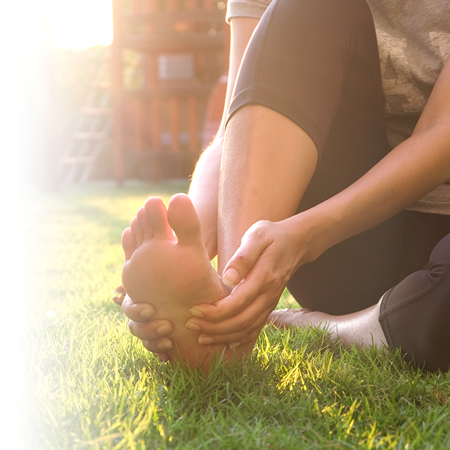Athlete's foot is a skin infection that affects many people. It is a health problem that can be prevented and treated.
Who can be inconvenienced by athlete's foot?
Athlete's foot is a skin infection of the feet caused by microscopic fungi belonging to the dermatophyte family. It's medical term is Tinea pedis.
Contrary to popular belief, the infection does not only affect athletes! Everyone can be affected by it at one time or another. Young adults are often more subject to it than children or older adults. Men are generally more likely to have it than women.
Certain factors can predispose a person to athlete's foot, including:
- a hereditary vulnerability
- excessive sweating of the feet
- a skin issue, such as eczema
- a foot wound (such as an ingrown toenail)
- a weakened immune system caused by a disease or a drug treatment
What are the signs and symptoms of athlete's foot?
Typical signs and symptoms of athlete's foot include:
- more of less deep cracks and fissures, especially between the toes (the sole of the foot is often affected)
- moist or white skin between the toes
- scaling of the skin
- redness
- itching
- pain, burning sensation or discomfort
- bad odour
It is best to obtain a diagnosis from a healthcare professional, such as a doctor or a podiatrist (a foot health specialist).
How is athlete's foot transmitted?
Athlete's foot is a contagious condition. The fungi that are responsible for it, spread in warm and moist areas; it can be caught by walking barefoot on shower, bath and pool surfaces or on public locker room floors, for example.
Can athlete's foot be prevented?
The risks of being contaminated by fungi that cause athlete's foot can be reduced by applying the following preventive measures:
- Do not share socks, shoes or slippers with other people.
- Avoid using towels or washcloths that are soiled or have been previously used.
- When walking in public areas (public showers, gymnasium, pool, water park, locker room, sauna, hotel room, etc.), always wear shoes, sandals or slippers.
- Maintain good foot hygiene. Wash them with a gentle soap at least once a day and after each physical activity. Be sure not to neglect the area between the toes.
- Dry your feet and toes properly after having washed them. Do not rub them too vigorously.
- Change your socks regularly to avoid dirt and humidity.
- If someone who lives with you has athlete's foot, focus on preventive measures. For example, do not walk barefoot in the house. Wear sandals when taking a shower. Ask the person to do the same and encourage him/her to follow a treatment to reduce the risk of contagion.
How is athlete's foot treated?
Athlete's foot generally requires a local (topical) treatment. There are several products against athlete's foot available over the counter at the pharmacy. They contain medicine against fungi (antifungal agent), such as miconazole or tolnaftate.
These products come in different formats, such as:
- powders (to be sprayed or not)
- creams
- spray solutions
In order to maximize the effects of the chosen product, it is important to properly read and follow the manufacturer's instructions. The treatment should usually last several weeks. If use of an over-the-counter product does not provide the expected results, it is preferable to see a doctor or podiatrist. You may be prescribed other medication.
Don't hesitate to speak your pharmacist for additional information about athlete's foot and its treatment.

